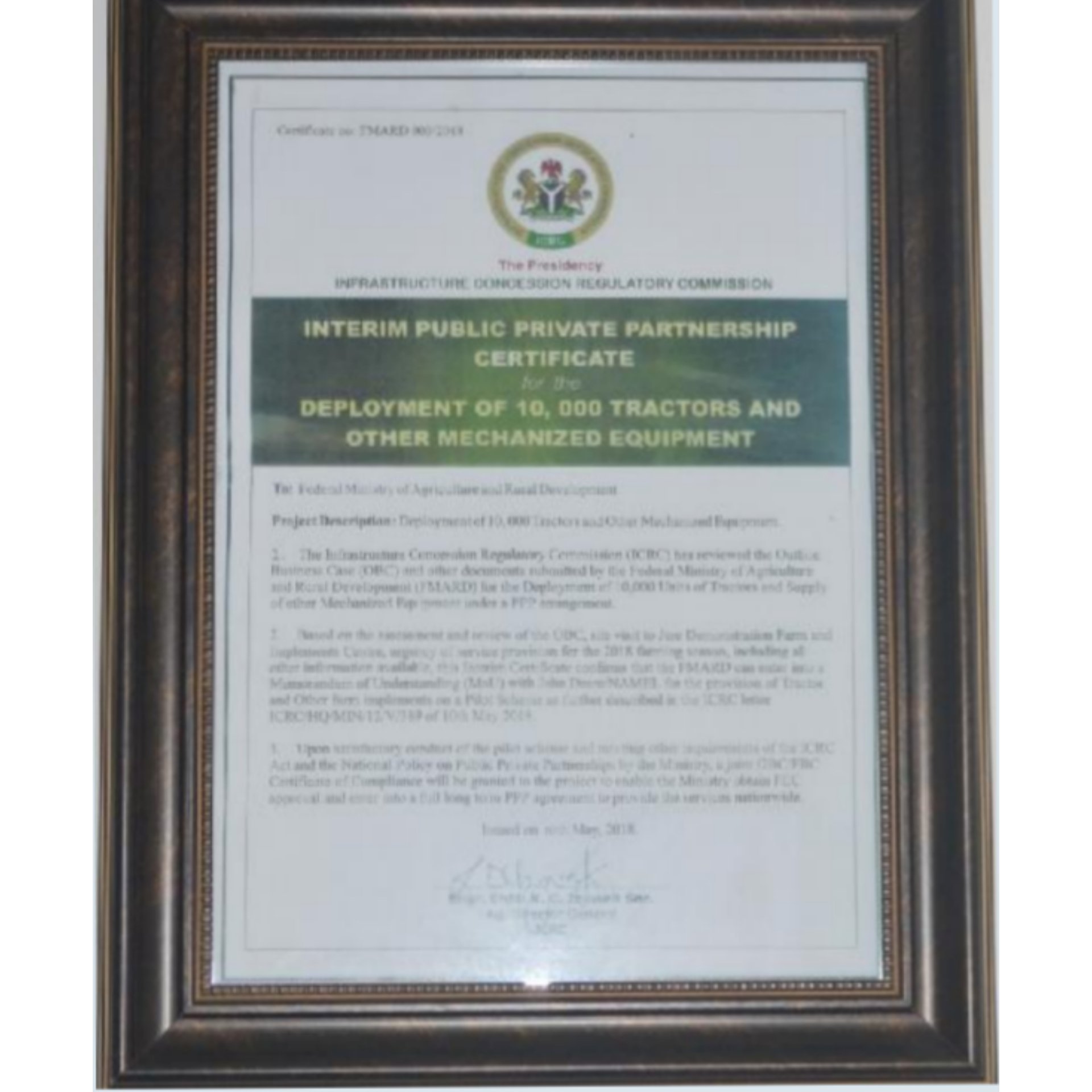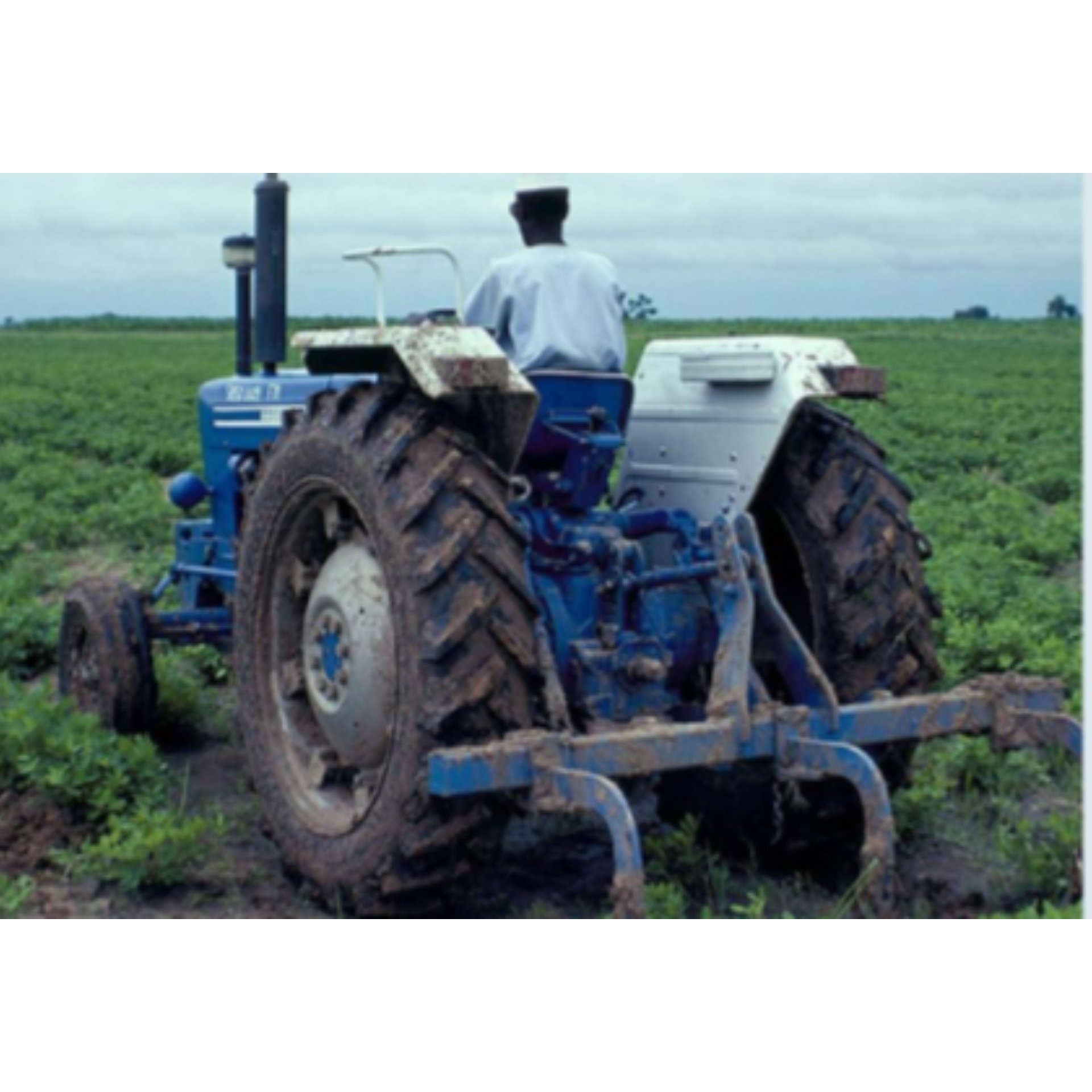Latest News
Mechanised farming: Dr. Ahmed Adekunle of NAMEL speakes on the future of agriculture, agro business in Nigeria (Photos)
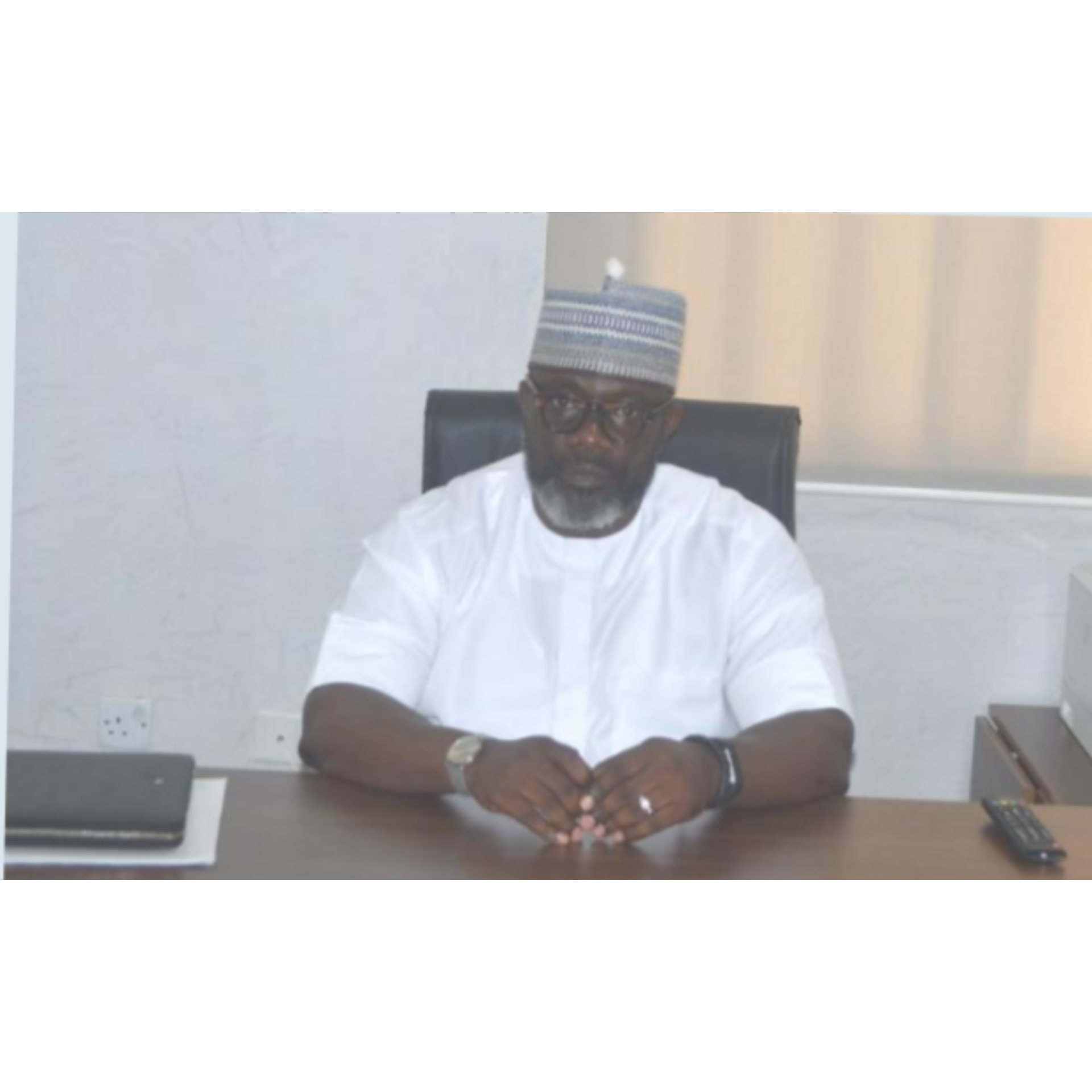
The Chief Executive Officer (CEO) of the Nigeria Agricultural Machinization & Equipment Leasing Company (NAMEL), Dr. Ahmed Adekunle has shed more light on the role of his company in the possible development of agriculture in Nigeria.
Dr. Adekunle who spoke during an interview session with ICRC bulletin in Abuja, the Nation’s capital made extremely vital revelations on the mode of operation of NAMEL and the Federal Government of Nigeria towards the injection of 10,000 tractors into the country’s agricultural sector.
Below is the excerpt from the interview:
Can you give us a brief introduction of NAMEL and what it stands to achieve?
The former Hon. Minister of Agriculture who is now the 8th President of African
Development Bank (AfDB), Akinwumi Adesina invited me from the private sector where I manage tractor leasing both old and new ones to make a presentation on how the agricultural sector in Nigeria can be boosted in terms of farm mechanization as the Federal Ministry of Agriculture was planning a program that would assist farmers with agricultural equipment’s. The Agricultural Ministerial Mechanization
Committee (AMMC) was then set up with members from the corporate organizations, bank of agriculture, Federal Ministry of Agriculture, and money deposit banks.
I was appointed as the chairman. The purpose was to drive a lease of agricultural equipment’s within a period of 2-3 years of which after the third year, the Federal Government will exit and the program will runpurely under the private sector. A tractor can actually generate money for itself under a conducive business environment and pay for itself over a period of time. the program kicked off
and along the line, the current Minister of Agriculture, Chief Audu Ogbe continued with the committee and on his instance, a proposal was sent to the presidency showing how the private sector will participate with 65% of the financing to
be provided by the Bank of Agriculture, while the Federal Government
provides 35% financing.
The project is about managing 10,000 unit of
tractors, funding and recouping private sector investment. Approval was granted to the ministry to commence and ICRC was to finalize the process. After careful scrutiny by ICRC, an interim PPP Certificate for the deployment of 10,000 tractors and other mechanized equipment’s was issued.
The committee is what has now transformed into NAMEL. The project is about management of ten thousand unit of tractors and recouping investment.
What is the period for the recoup?
The period for executing the ten thousand units of tractors, is 5 years (the tractors will come in set of two thousand) but the period of recouping investment is in tranches. Recoup for the first tranche (two thousand tractors) is six years, and the same goes for the next set. So that means it will take about 12 years.
NAMEL not only give out tractors but also manages the utilization and sustainability of the tractors. This is because history has shown that for over 50 years, Nigeria became a dumping ground. The most annoying and dangerous fact, is that
the recession has shown clearly that tractors are no longer affordable not even to the medium scale farmers because our
productivity per hectare is very low.
NAMEL bridges thegap for the turnaround
of production per hectare through mechanization.
NAMEL is now the leasing arm of the Federal Ministry of Agriculture. A turn around in production per hectare will increase productivity per hectare through the application of mechanization.
So far, how will you rate this program in terms of performance? How about the farmers, are they really into it?
I think it is too early in the project to start rating them, considering what we are doing. At the same time I will not say it’s too early because we already have close to a thousand tractors working under the program and we have organized tractor users and associations such as the Tractor Owners Association of Nigeria (TOAN) and TOFAN. The rating of such organized farmers honestly is very high. To the extent that the private financial institutions are saying that they do not need guarantees to release funding to them again because they have borrowed over ten billion naira and the rate of default is almost zero. So, in terms of utilization and equipment management, I think we have discovered a scheme that the banks are very comfortable with to invest in. Even the approval of NAMEL by the Federal Government goes again to prove that the scheme is guaranteed to achieve returns on investment.
The farmers that are currently benefiting from the current one thousand tractors, where are they located in Nigeria?
One thing we need to understand is that the
farmers don’t own the tractors, this is the common mistake with this program, farmers cannot afford the tractors. Majority of the farmers we are targeting to mechanize operate under 0.5 to 1.5 hectares. And if you don’t have between 50 to 100 hectares, you don’t need a tractor. It makes no economic sense to operate a few insignificant hectares of farm lands and own a tractor. What has been done is to create a platform, a scheme that raised a cluster of enterprises that provides mechanization services at farm gates. They go around to farmers (who don’t
need to own these equipment’s) and provide the interim services at a fee.
Where are these tractors located and how is it being operated?
These tractors are demand driven and not
allocated. It covers areas where there is
intensity of farming. Most of the service
providers identify areas and they deploy their tractors to service those areas. We cannot specifically say, “this is where they are” but they are all over the country. Where demand exists that is where the tractors go. In each state you’ll find tractor hiring scheme.
From your experience sir, what do you see as challenges for this scheme?
Firstly, one major challenge is funding from
both the private and public sector. This is a
major challenge to mechanization. This is due to the obvious fact that mechanization is capital intensive and is undoubtedly out of the reach of medium and large-scale farmers in Nigeria due to the obvious reason of affordability. Most farmers in Nigeria cannot afford to own a tractor which runs to millions of naira in investment. Kudos to this leasing
scheme which have provided farmers access to mechanization. Sustainability of the mechanization itself, which has to do with maintenance of the mechanical aspect is also a problem.
Recently, the economic crouch and
recession has further shown that there is a hidden factor that we do not talk about. All this while the professors and engineers like myself, have not realized that the economy, the commerce of mechanization is a factor that can threaten everything we do. For example, a farmer buys a tractor for 14 million, production per hectare is 2
metric tons, there’s no way the farmer can pay for the tractor in twenty years, and the lifespan of tractors in Nigeria is about ten years. So, this is a great challenge, productivity per hectare using mechanization.
Operation and management is also a challenge. At least these are some clear and visible challenges. Right now, the NAMEL deal with the Federal Ministry of Agriculture, is one big step to taking away the burden of financing. I’ve not seen
anywhere where government funds a
mechanization project 100%. What we did was to develop a scheme that shows guarantee on investment by wooing the surplus funds in the private banks and bring it in and also show the private banks that this is how this money is going to be paid back.
The NAMEL mechanization
private sector driven scheme, Agriculture
Equipment Hiring Enterprise (AEHE) made it possible for a farmer to get mechanized without indefinitely owing that equipment.
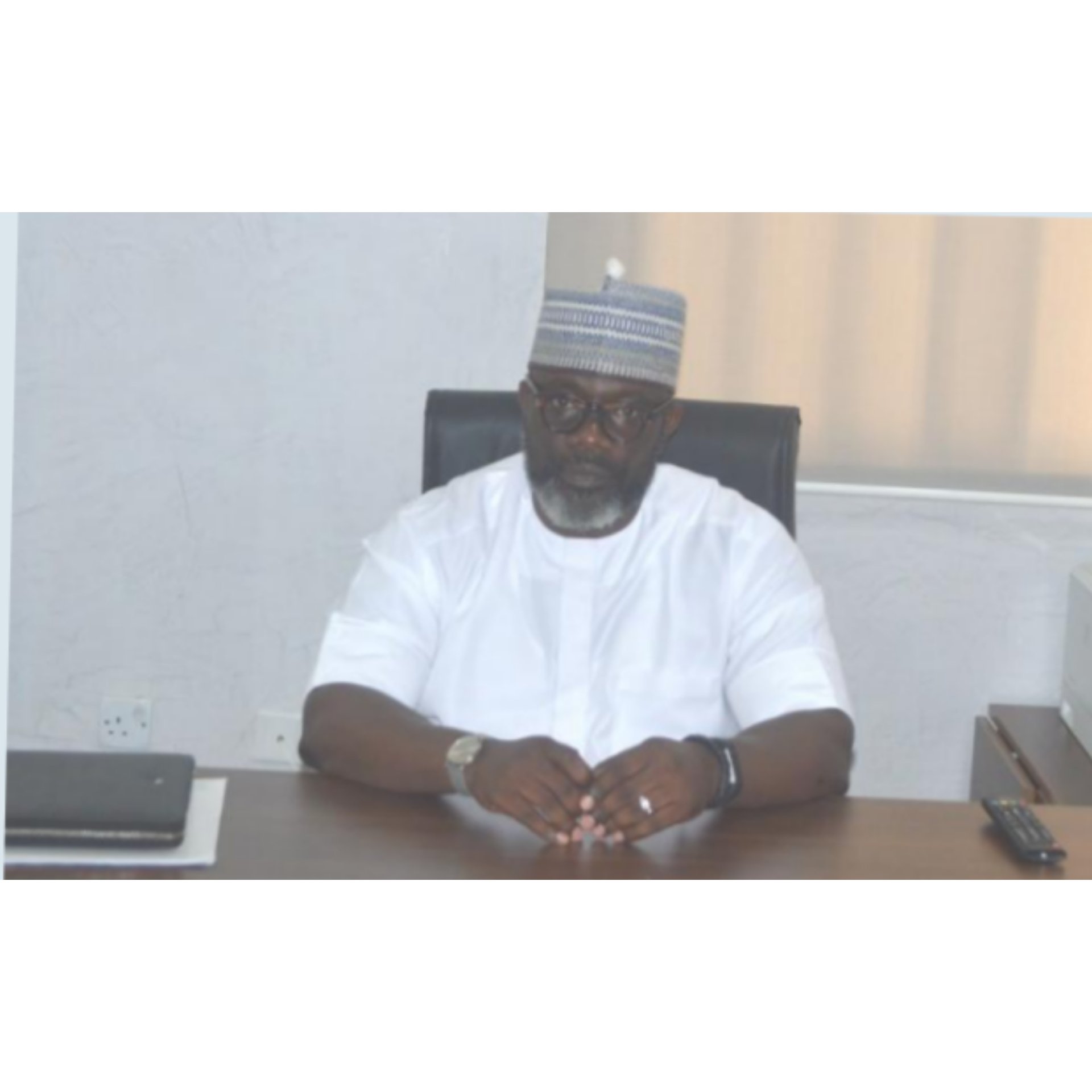
In the next 10,15, 20 years, will farmers in Nigeria be able to buy a tractor?
Absolutely, part of the NAMEL program is how do we intend to sustain the supply of tractor for the next 10 years. In solving part of the funding challenge, a program called SMART was created and incorporated into NAMEL.
The smart program talks about; funding, sustainability of the equipment, operation, the mechanical and management. If the SMART program is applied, productivity will increase by 300. This is envisaged to sustain the cost and supply of
tractors. Now, the normal profitability scenario with a farmer is that if the farmer produces, manages, harvests and warehouse, and can sell the produce, the following year, the farmer will increase to 2 hectares, the subsequent year to 3 hectares, then 4 and so on.
In China and Indiaright now for example, most farmers living comfortably don’t have more than 3-4 hectares of land but their productivity per hectare is extremely high. The question is how we intend to raise the productivity level per hectare of Nigerian farmers to achieve maximum profitability. To do that, we intend to open more lands, go into a more contiguous land development project. While we are requesting state governments to release 13,000 hectares. It will be distributed to farmers through the leasing scheme of NAMEL. Production will be strictly guided and it will be mostly cash crops and not farming to feed themselves as is common with some farmers.
Agriculture is a business, it is not only about what you eat, it is about quality and standard of what is being produced.
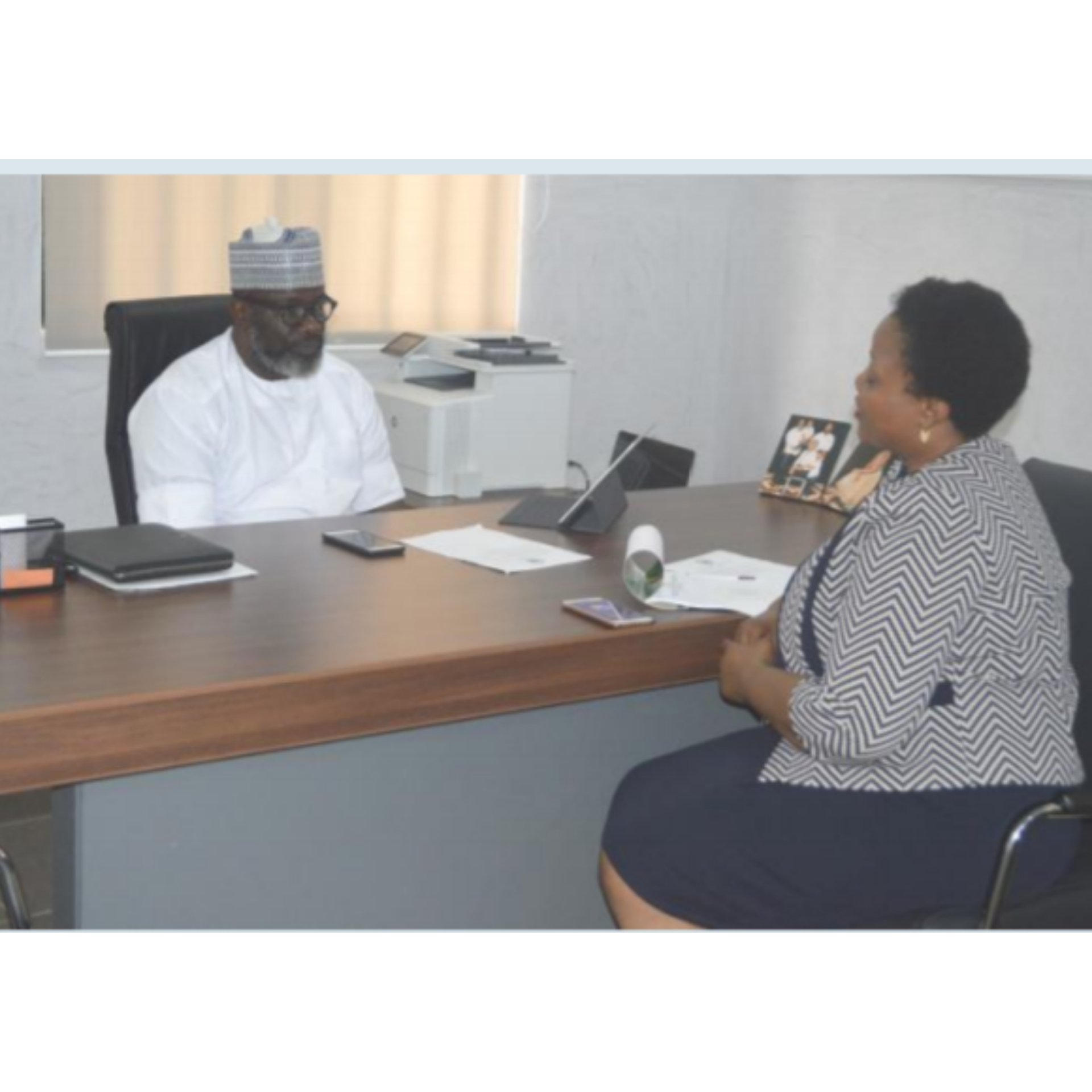
How will it be disposed? How do you get
return on investment? who will take it from
you?
This is what matters in our land development project. It is a value chain scheme dealing with land preparation, land development, farming, management, market and finance.
How do you see the economy in Nigeria
relating to farming and business?
I will tell you that the economy in Nigeria is
saying a lot on the farmer in the sense that
you’ll find out that the cost of input, cost of
mechanization, cost of transportation is
affecting the price of what we are producing.
Nevertheless, in all honesty, one of the things affecting the farmers basically is our output per hectare. We’re not getting the maximum. What we’re getting now, is like 25% or 20% of what is expected.
What can we say could be the cause?
Wrong inputs. Inputs include fertilizer,
seedlings and its application. Land clearing as well contributes to the cause. Land clearing is scientific and it hugely affects production. If you don’t clear the land very well, and you remove the top soil, which implies that almost 70% of the nutrient of the soil have been taken out. Stones, rocks and other interfering properties hinder tractor performance and the spread of input will not be even. Precision in farming is a factor that affects productivity increase.
